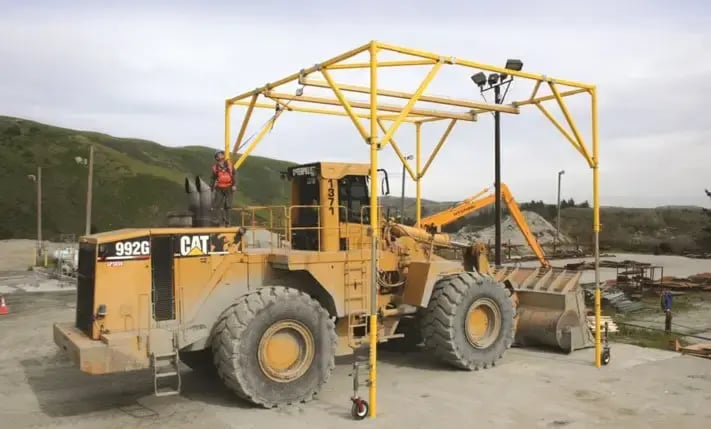Aircraft Hangars
As an aircraft maintenance supervisor, there is enormous pressure to keep “your birds” in the air. Losing vital staff due to falls makes it difficult to adhere to the rigorous maintenance schedules required to keep the fleet in service. Protecting your maintenance staff and creating a safe, accident free hangar requires a comprehensive fall protection program. From an initial risk and hazard assessment, to a review of each hangar’s structural elements, from installation of fall protection equipment to the onsite training of staff, DFP will partner with you to minimize falls and serious injury to your personnel.
-portrait.webp?width=1000&height=1250&name=Aircraft%20(25)-portrait.webp)
Fall Protection Solutions
Design Considerations
The fall protection requirements for aviation maintenance personnel are diverse. While aircraft maintenance technicians all face working at heights on smooth, slippery surfaces, hangar roof heights, differing potential anchor points, shape and roof pitch/curvature, and the amount of load that can be safely added to a roof’s internal structure vary from one hangar to the next. An aircraft hangar fall protection system for servicing small private jets and military aircraft needs to provide different coverage from a fall protection system installed in facilities that typically service larger aircraft. In maintenance facilities designed primarily for smaller planes, positioning requirements and lower working heights typically require a rigid rail overhead trolley system. Cartesian, or two way coordinate systems offer the flexibility to provide fall protection for 100% of planned coverage, and can be power or manually driven. On taller, military and commercial aircraft where working heights allow, fixed horizontal lifelines are used in addition to rigid rail trolley fall protection systems. For outside tarmac maintenance, DFP also offers portable fall protection systems, including vacuum single point anchors. Regardless of the structural limitations of your maintenance facility and the size of aircraft serviced, DFP engineers each hangar fall protection system with several guiding principles. Our goal is to engineer fall protection systems to provide complete access to the fuselage, wings, and tail of private, commercial, and military aircraft. Fall protection must not interfere with mobility or productivity. All systems are engineered with simplicity and ease of use as goals to ensure compliance. Finally, each fall protection system must meet OSHA and ANSI standards in a cost-effective manner. These design principles, coupled with years of experience in aviation settings make DFP the ideal partner for all of your hangar fall protection needs.

b-1.jpg?width=1368&height=1340&name=Rail%20(175)b-1.jpg)







.webp?width=500&height=375&name=Aircraft%20(21).webp)
